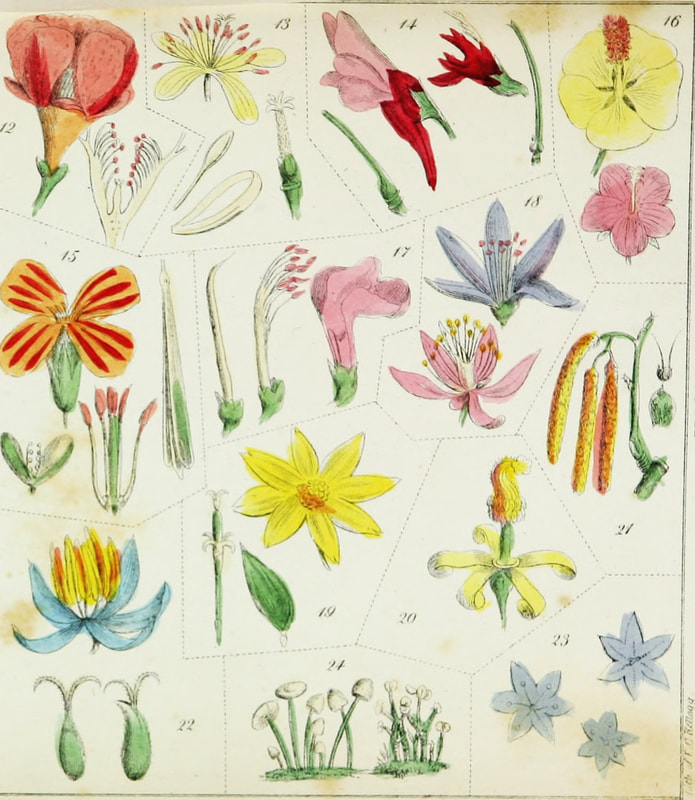Botanicals:
Herbal Materia Medica - Wild Edibles & Medicinals - Flower Essences - Aromatherapy - Healing Foods
Herbal Materia Medica - Wild Edibles & Medicinals - Flower Essences - Aromatherapy - Healing Foods
Water Hemlock - Cicuta Douglassi
Water hemlock may well be the most deadly poisonous plant that grows in North America.Ingesting even small amounts can produce poisoning and death in humans and animals. The toxic substance in water hemlock is cicutoxin, a highly poisonous unsaturated alcohol that has a strong, carrot-like odor. The deadly Cicutoxin, a violent convulsant, acts directly on the central nervous system causing seizures and death. Ingestion of hemlock can be fatal and symptoms can occur 15 minutes to 6 hours after the plant has been ingested.Initial symptoms may include the rapid onset of seizure activity along with nausea, vomiting, muscle twitch, increased pulse, excessive salivation or frothing at the mouth, and dilation of the pupils. Clinical signs of poisoning occur when a threshold dose is reached after which grand mal seizures and death occur.
Identification
The leaves of western waterhemlock are arranged like a feather, dividing 1–3 times into narrow-toothed and lance-shaped leaflets 1–4 inches long. The leaflet veins run from the midrib to the notches along the leaf edges, and then branch to the teeth-like tips. Like poison hemlock, Western waterhemlock’s flowers are white and grouped in umbrella-shaped clusters.
Likewise, each flower is two-seeded. The tea-colored seeds are somewhat kidney-shaped with corky ridges. Western waterhemlock reproduces from seed and vegetatively through overwintering root structures. Seeds from plants growing along irrigation canals can be transported by water or mud to other locations and can remain viable in soil for up to three years.
(https://extension.oregonstate.edu/crop-production/pastures-forages/poison-hemlock-western-waterhemlock-deadly-plants-may-be-growing)
Likewise, each flower is two-seeded. The tea-colored seeds are somewhat kidney-shaped with corky ridges. Western waterhemlock reproduces from seed and vegetatively through overwintering root structures. Seeds from plants growing along irrigation canals can be transported by water or mud to other locations and can remain viable in soil for up to three years.
(https://extension.oregonstate.edu/crop-production/pastures-forages/poison-hemlock-western-waterhemlock-deadly-plants-may-be-growing)
Description: As a member of the Umbelliferae Family, (Apiaceae or Umbelliferae is a family of mostly aromatic flowering plants named after the type genus Apium and commonly known as the celery, carrot or parsley family) Water hemlock has small, white flowers that grow in umbrella like clusters. A perennial plant that grows to a height of 3 to 7 feet tall, with leaves are up to 15 inches long, alternately-arranged, and tri-pinnately-compound with numerous 2 to 5 inch ovate leaflets. They are also sharply toothed. The leaf veins terminate at the bottom of leaf serrations and not at the tips, which helps to identify this plant. The thick rootstalk of water hemlock contains a number of small chambers. These hold a highly poisonous brown, yellowish, or straw-colored oily liquid that is released when the stem is broken or cut. This poisonous liquid is said to smell like raw parsnip. Thick, fleshy tubers and slender individual roots grow from the bottom of the rootstalk. Water hemlock grows in wet seepage areas of meadows, pastures, and in streams. It reaches a height of 0.5 to 1.0 meters.
Water hemlock may be confused with poison-hemlock because of the similarity in names; however, these two are different plants that cause different types of poisoning. It has also been confused with wild parsnips, Angelica, and other medicinal plants.
Flowers are white and tiny, have 5 petals and 5 stamens that grow in umbrella like clusters 2 to 8 inches across. The plant flowers in spring or early summer. The stem is branching, smooth, hollow and often with purplish-green striations. It has a tuberous root with rootstalks that are multi-chambered and contain a
Types of Water Hemlocks: bulblet-bearing w. h. (Cicuta bulbifera) , western w. h. (Cicuta douglasii), beaver poison (Cicuta maculata), cowbane (Cicuta virosa), spotted w. h. (Cicuta occidentalis)
Water hemlock may be confused with poison-hemlock because of the similarity in names; however, these two are different plants that cause different types of poisoning. It has also been confused with wild parsnips, Angelica, and other medicinal plants.
Flowers are white and tiny, have 5 petals and 5 stamens that grow in umbrella like clusters 2 to 8 inches across. The plant flowers in spring or early summer. The stem is branching, smooth, hollow and often with purplish-green striations. It has a tuberous root with rootstalks that are multi-chambered and contain a
Types of Water Hemlocks: bulblet-bearing w. h. (Cicuta bulbifera) , western w. h. (Cicuta douglasii), beaver poison (Cicuta maculata), cowbane (Cicuta virosa), spotted w. h. (Cicuta occidentalis)
Take Care with the Parsley Family (Apiaceae)
Excerpted from Scott Kloos, Pacific Northwest Medicinal Plants:
Take care with the parsley family because several toxic plants in this family grow in the Pacific Northwest and may be confused with common medicinal plants, it is vitally important to accurately and positively identify the plants you intend to harvest. Two of these poisonous plants, Water Hemlock and Poison Hemlock, looked similar to medicinal plants described in this book, and both are deadly toxic even when consumed in small quantities. Do not ingest any part of wild carrot, Angelica, or any other member of the parsley family unless you are 100% confident in your ability to correctly identify the plant in question. Your life or the lives of others depend on it.
Take care with the parsley family because several toxic plants in this family grow in the Pacific Northwest and may be confused with common medicinal plants, it is vitally important to accurately and positively identify the plants you intend to harvest. Two of these poisonous plants, Water Hemlock and Poison Hemlock, looked similar to medicinal plants described in this book, and both are deadly toxic even when consumed in small quantities. Do not ingest any part of wild carrot, Angelica, or any other member of the parsley family unless you are 100% confident in your ability to correctly identify the plant in question. Your life or the lives of others depend on it.
The Angelicas and Water Hemlocks both prefer wet soils and have compound leaves with large leaflets. To avoid inadvertently gathering water Hemlock (cicuta douglasii) when you are seeking to harvest Angelica (Angelica species) roots or seeds, pay close attention to these distinguishing characteristics. Angelica roots have a very specific perfumey, soap-like smell and a usually unchambered, solid root. Angelica’s leaf veins usually terminate at the tips of the teeth. In contrast water Hemlock usually has chambered roots and its leaf veins usually terminate at the cut between the teeth. You may have noticed that I used the word usually several times in the previous two paragraphs. I did this because the form of individual plants of the same species can sometimes differ greatly. Do not rely exclusively on any one of the traits described here to make a positive identification, and keep in mind that the most reliable way to accurately differentiate plants in this family is to identify them by the form and structure of their seats. Before attempting a harvest, identify the plants while in seed using a botanical key, and get to know the differences intimately. (Scott Kloos, Pacific Northwest Medicinal Plants)
Hemlock Poisoning and the Death of Socrates
Excerpt from Hemlock Poisoning and the Death of Socrates: Did Plato Tell the Truth? by Enid Bloch (State University of New York at Buffalo, NY, USA)
The closing pages of Plato’s Phaedo provide a stunning picture of the effects of poison upon the body of Socrates. Plato describes a slowly ascending paralysis, beginning in Socrates’ feet and creeping steadily up his legs toward his chest, with Socrates’ mind remaining clear until the end. Death arrives calmly and peacefully. It is a remarkable account, rich in emotive power and in clinical detail. But is it true? Let us recall once again those final hours. After Socrates drank the poison, ‘he walked about and, when he said his legs were heavy, lay down on his back, for such was the advice of the attendant.’ The jailor then began to examine Socrates, much in the way a modern physician might do. The man … laid his hands on him and after a while examined his feet and legs, then pinched his foot hard and asked if he felt it. He said ‘No’; then after that, his thighs; and passing upwards in this way he showed us that he was growing cold and rigid. And then again he touched him and said that when it reached his heart, he would be gone. The chill had now reached the region about the groin, and uncovering his face, which had been covered, he said – and these were his last words – ‘Crito, we owe a cock to Asclepius. Pay it and do not neglect it.’ ‘That,’ said Crito, ‘shall be done; but see if you have anything else to say.’ To this question he made no reply, but after a little while he moved; the attendant uncovered him; his eyes were fixed. And Crito when he saw it, closed his mouth and eyes. (Plato, Phaedo 117e-118a, trans. Loeb Classical Library, Harvard University)
Determining the likely ingredients in Socrates’ cup proved in itself a difficult task, for Plato never identified hemlock, kôneion in Greek, as the actual poison, speaking only to pharmakon, ‘the drug’. How can we be sure it was hemlock? And which hemlock? A number of plants with different properties are called by that same name. Plato’s Greek also presents a challenge. What exactly did he mean when he stated that Socrates’ legs were ‘growing cold and stiff,’ psuchoito te kai pêgnuto? Should we understand ‘cold’ as an actual drop in temperature, a subjective feeling of chill, or simply a lack of energy? Does ‘stiff’, or ‘congealed’ in the Greek, imply a rigid paralysis or a flaccid one? In the answers to these questions lies all the difference between central and peripheral nervous system pathology, and therefore between toxins from a plant such as water hemlock, which attack the brain and spinal cord, and those from poison hemlock, which target peripheral nerves. In the end I have been able fully to align Plato’s description with modern medical understanding. Socrates suffered a peripheral neuropathy, a toxin-induced condition resembling the Guillain-Barré syndrome, brought about by the alkaloids in Conium maculatum, the poison hemlock plant. Plato proves to have been entirely accurate in every clinical detail. Most ancient writers seem to have known very well which herb they were talking about when they spoke of hemlock, and they did not question its ability to provide a peaceful death. According to Theophrastus, the speed and ease of hemlock’s effects depended on the thoroughness of its preparation. Hemlock must often have been combined with other drugs in an attempt to enhance its virtues. Theophrastus tells us of a certain Thrasyas of Mantineia, who discovered ‘a poison which produces an easy and painless end; he uses the juices of hemlock, poppy and other such herbs, so compounded as to make a dose of conveniently small size.’ We can well imagine Socrates’ jailor doing likewise. It is evident that he crushed the hemlock, for when Socrates asked him to ‘prepare’ the poison, he used a form of the verb tribô, which means to crush, as in a mortar.
The closing pages of Plato’s Phaedo provide a stunning picture of the effects of poison upon the body of Socrates. Plato describes a slowly ascending paralysis, beginning in Socrates’ feet and creeping steadily up his legs toward his chest, with Socrates’ mind remaining clear until the end. Death arrives calmly and peacefully. It is a remarkable account, rich in emotive power and in clinical detail. But is it true? Let us recall once again those final hours. After Socrates drank the poison, ‘he walked about and, when he said his legs were heavy, lay down on his back, for such was the advice of the attendant.’ The jailor then began to examine Socrates, much in the way a modern physician might do. The man … laid his hands on him and after a while examined his feet and legs, then pinched his foot hard and asked if he felt it. He said ‘No’; then after that, his thighs; and passing upwards in this way he showed us that he was growing cold and rigid. And then again he touched him and said that when it reached his heart, he would be gone. The chill had now reached the region about the groin, and uncovering his face, which had been covered, he said – and these were his last words – ‘Crito, we owe a cock to Asclepius. Pay it and do not neglect it.’ ‘That,’ said Crito, ‘shall be done; but see if you have anything else to say.’ To this question he made no reply, but after a little while he moved; the attendant uncovered him; his eyes were fixed. And Crito when he saw it, closed his mouth and eyes. (Plato, Phaedo 117e-118a, trans. Loeb Classical Library, Harvard University)
Determining the likely ingredients in Socrates’ cup proved in itself a difficult task, for Plato never identified hemlock, kôneion in Greek, as the actual poison, speaking only to pharmakon, ‘the drug’. How can we be sure it was hemlock? And which hemlock? A number of plants with different properties are called by that same name. Plato’s Greek also presents a challenge. What exactly did he mean when he stated that Socrates’ legs were ‘growing cold and stiff,’ psuchoito te kai pêgnuto? Should we understand ‘cold’ as an actual drop in temperature, a subjective feeling of chill, or simply a lack of energy? Does ‘stiff’, or ‘congealed’ in the Greek, imply a rigid paralysis or a flaccid one? In the answers to these questions lies all the difference between central and peripheral nervous system pathology, and therefore between toxins from a plant such as water hemlock, which attack the brain and spinal cord, and those from poison hemlock, which target peripheral nerves. In the end I have been able fully to align Plato’s description with modern medical understanding. Socrates suffered a peripheral neuropathy, a toxin-induced condition resembling the Guillain-Barré syndrome, brought about by the alkaloids in Conium maculatum, the poison hemlock plant. Plato proves to have been entirely accurate in every clinical detail. Most ancient writers seem to have known very well which herb they were talking about when they spoke of hemlock, and they did not question its ability to provide a peaceful death. According to Theophrastus, the speed and ease of hemlock’s effects depended on the thoroughness of its preparation. Hemlock must often have been combined with other drugs in an attempt to enhance its virtues. Theophrastus tells us of a certain Thrasyas of Mantineia, who discovered ‘a poison which produces an easy and painless end; he uses the juices of hemlock, poppy and other such herbs, so compounded as to make a dose of conveniently small size.’ We can well imagine Socrates’ jailor doing likewise. It is evident that he crushed the hemlock, for when Socrates asked him to ‘prepare’ the poison, he used a form of the verb tribô, which means to crush, as in a mortar.
Resources & Recommended:
Additional Sources Cited:
https://extension.oregonstate.edu/crop-production/pastures-forages/poison-hemlock-western-waterhemlock-deadly-plants-may-be-growing
Hemlock Poisoning and the Death of Socrates: Did Plato Tell the Truth? by Enid Bloch (State University of New York at Buffalo, NY, USA)
https://www.wildernesscollege.com/water-hemlock.html
Hemlock Poisoning and the Death of Socrates: Did Plato Tell the Truth? by Enid Bloch (State University of New York at Buffalo, NY, USA)
https://www.wildernesscollege.com/water-hemlock.html





